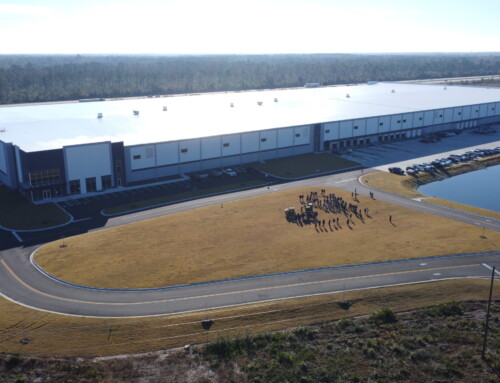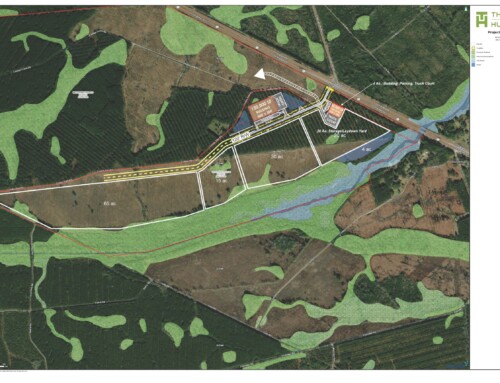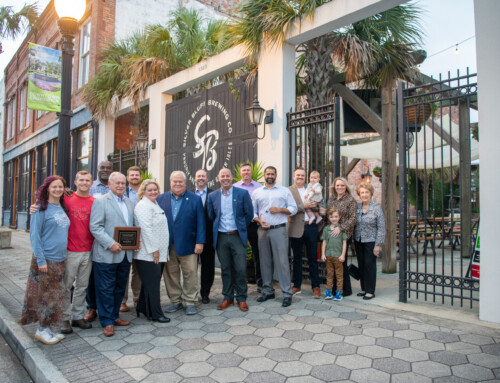Unity Key in Recruiting New Industry
By LINDSEY ADKISON The Brunswick News
Thursday, May 14, 2015
Mel Baxter is committed to the economic future of Glynn County. But the interim executive director of the Brunswick and Glynn County Development Authority knows his organization cannot make strides alone — it needs the support of the entire area, including all local governmental entities, if they are to truly succeed.
That was his message to local officials and civic leaders Wednesday as the group gathered at the College of Coastal Georgia for the authority’s strategic planning workshop. To drive the point home, Baxter shared a scenario where all of the parties came together for the common good.
That happened many, many months ago when Trader Joe’s, a national specialty grocery store chain, was considering opening a distribution center at the Tradewinds Industrial Park, off Highway 99.
In the end, the company opted to go elsewhere and refurbish one of their existing facilities in Tampa in what Baxter says was a cost-saving measure.
“We had been talking to them for a while and we were in the running, but they let us know that they weren’t coming 18 to 24 months ago,” Baxter said. “So it was disappointing. We were willing to give them the land, which is the norm now, but it didn’t work out.”
While the loss of 500 potential jobs was a hard pill to swallow, Baxter told those at the meeting, held at College of Coastal Georgia, that the process was still a “win” of sorts.
“I call it a success because Glynn County really did come together. We put together what we call the ‘A-team,’ and we got all the players in one room. (Trader Joe’s officials) were able to ask questions … questions that saved them time and money,” Baxter said.
“They commented that it was one of the finest presentations they had ever had. I think it was a milestone that everyone got on the same page and worked together to do this kind of collaboration.”
It was that spirit that prompted Baxter and other authority officials to reach out to community leaders and officials, inviting them to attend the three-hour work session, which included various presentations as well as an interactive session.
“In looking at this, we felt that it was so important to include our partners and stakeholders in Glynn County. We know that ideas from each and everyone of you could be the ideas that moves us forward,” Baxter said.
In addition to offering suggestions for the authority’s plan, familiarizing attendees with the authority’s purpose was another priority. Peggy Jolley, formerly of Georgia Power and the newly appointed coordinator for the Southeast Georgia Joint Development Authority, took a moment to explain the difference between the authority and other local governmental agencies.
“I think we have a hard time distinguishing (the difference) because it is quasi-governmental agency, and we think it’s just another water-sewer or public works department,” she said. “But stepping aside from the ‘quasi’ part, it is a business that has to be run in a very competitive way. It’s not just all about serving the citizens, it’s also about getting out there and selling the product. You have to prepare like you are a private developer, selling the product.”
That product — Glynn County — has to compete against the rest of the state, even the nation, in order to bring corporations and jobs to the area. It was something presenter Brad Loftin spoke to when he took to the podium. Currently an economic development official in Dublin, he has extensive experience with other communities throughout the state. He stressed the importance of industry as a way of mitigating costs for providing public services.
Loftin also underscored just how competitive the economic development market is today, with the majority of companies seeking free land in addition to a flurry of other incentives.
“Giving land has become the norm now. You will tell them that you can give them land and tax incentives … then they look at you and say ‘what else,’” Loftin said of the negotiation process.
The competitive nature of economic development was brought up time and again throughout the workshop. Baxter noted that incentives coupled with perseverance were responsible for bringing or keeping businesses in the area. The most notable was the Gulfstream expansion with its $30 million capital investment and 170 new jobs.
“We talked to Gulfstream for two or three years before they were going to expand. Then one day, we got the call saying that we’re not going to expand in Glynn County. But we stayed with them and the talks began again,” he said.
That expansion project is currently in its final stages with further growth a very real possibility. Baxter discussed others successes, including Rich Products’ new lease agreement, which will bring in 100 new jobs at their St. Simons Island headquarters, as well as IAP’s $2 million capital investment.
After the presentations, each table, featuring a mix of development and civic leaders, spent time engaged in conversation, offering their ideas on what the authority’s plan should include. Funding, possibly through a small millage rate, turned out to be a key suggestion.
Others items that were mentioned included constructing a spec building, engaging residents with international connections in the area and reaching out to logistics corporations.







